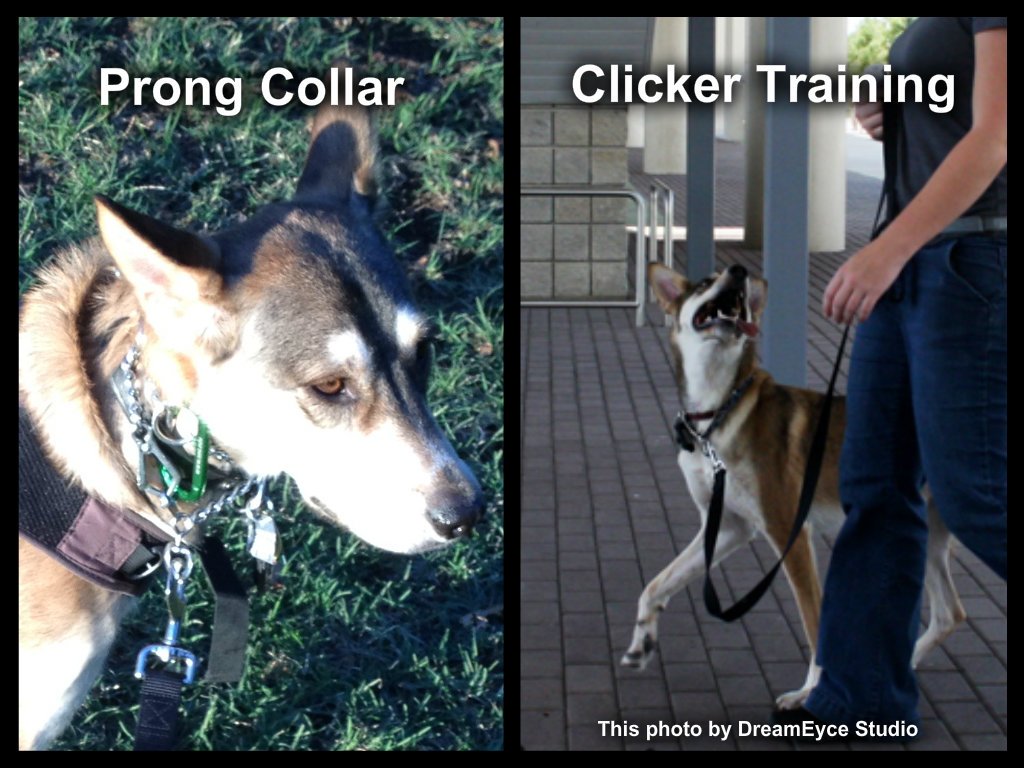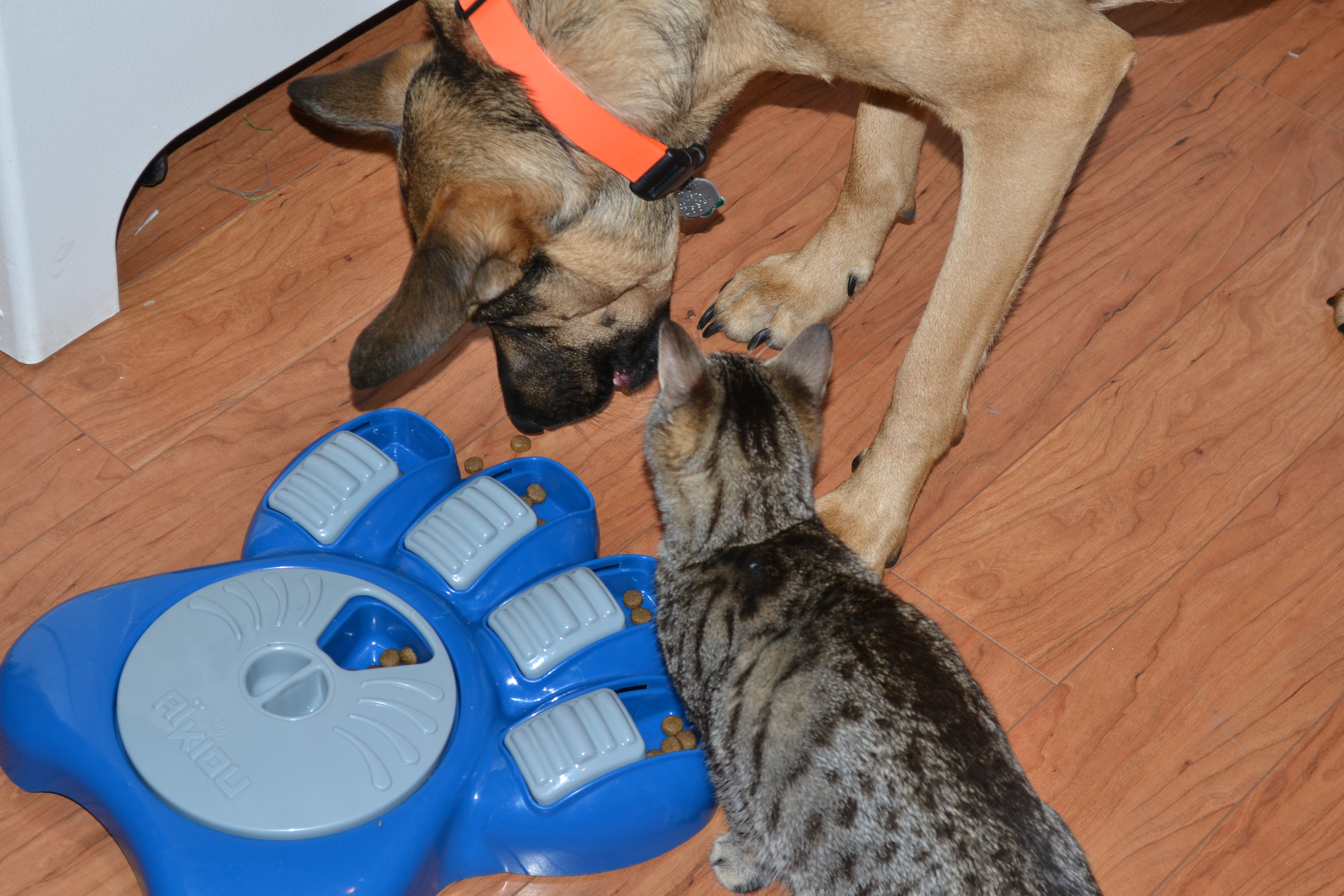I used to be a HUGE fan of prong collars. They allowed maximum control with very little effort. When I would roller skate (Cesar Millan style) down the street with three Pit bulls and a German shepherd mix, prongs and slip collars were a must to control the dogs. It was a ton of fun to roller skate with all those dogs and see people stare at me as they drove by. The dog’s loved running together full speed ahead. Surprisingly, the only time I fell and scraped myself was when I was with just one dog and I had family with me that distracted me. They all knew “whoa” because we would stop before crossing any street. I, of course, taught “whoa” by putting pressure on the prongs and braking on my skates.
The prong collars allowed me maximum control with very little training. When we’d pass other dogs, I’d say “let’s go” and gently pull the prong collars a couple times. That would be enough to remind everyone to keep going forward and not stop to visit.
Prong Collars
I recently came across a conversation on prong collars where someone was saying that the collars are not for all dogs, but that they work wonders on pit bulls. While I definitely agree with that because they DO work, it’s just not how I would train anymore. The consequences of using prong collars are too risky.
Which picture shows a happier dog?
For one, I want my dog to enjoy being with me instead of threatening with pain (yes, they are painful) to obey. If they were not painful, they wouldn’t work. Dogs, of any breed, do not have any less nerves in their necks than we do and are just as sensitive. Just because a dog has a bigger neck does not mean they have less sensitivity on their skin in those areas. Again, if the collars were not painful, they would not accomplish their purpose.
Nothing my dog can do would make him deserve being poked and choked in the neck. I’m not saying that I’m never frustrated. I’m saying that I’ve got to be the adult in this relationship! I can control my emotions and reactions where as he cannot. It is up to me to teach him how to deal with life appropriately. As the teacher, I have to teach him in a way he will be comfortable and learn well – intimidation and pain are not those things.
Last but not least, I don’t want to hurt or injure my beloved four-legged family member. (Health Concerns about Prong and Choke Collars) I can use my brain to find friendlier ways to train them to do what I want. Positive reinforcement techniques are used on all sorts of animals all over the world. There is no reason positive reinforcement shouldn’t or wouldn’t work on Pit bulls, Rottweiler’s, or any other large bully breeds. Many people say they have tried positive reinforcement only to say it doesn’t work. This can happen for several reasons: inconsistency, incorrectly implementing the methods, conflicting interactions, and more. This is why it is important to hire a positive reinforcement based professional who knows what they are doing. Check out the Pet Professionals Guild for professionals in your area.
Check out a great mission by a fellow Pit bull and Rottweiler lover and rescuer: Train with Your Brain, Not Pain: http://www.heartdog.org/brainnotpain/
If you use a prong collar because your dog pulls otherwise, check out my video and handout on teaching loose leash walking by clicker training.






